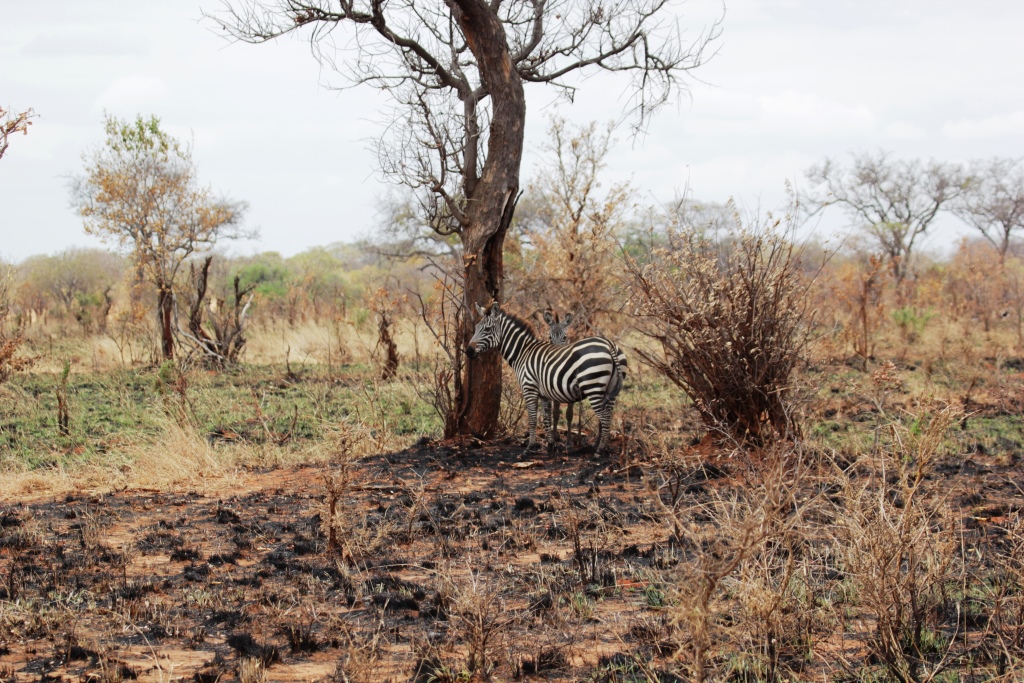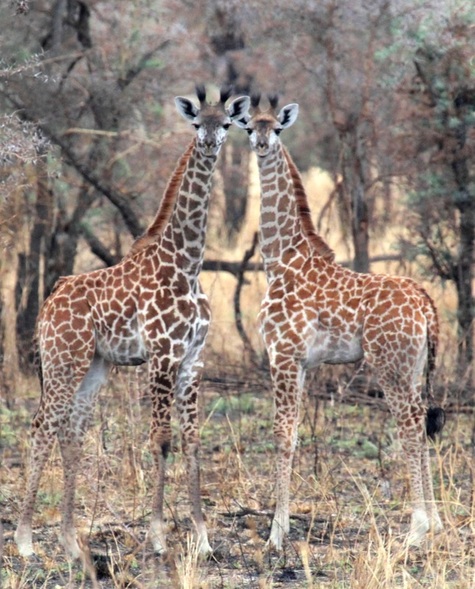|
Dry season fires play an important role in African savanna. Much like in the conifer forests of the western United States, these fires do not destroy habitat or devastate the biological community. The University of California’s Museum of Paleontology website provides an excellent description of the effects of fires on savanna ecology: A fire is a feast for some animals, such as birds that come to sites of fires to eat grasshoppers, stick insects, beetles, mice, and lizards that are killed or driven out by the fire. Underground holes and crevices provide a safe refuge for small creatures. Larger animals are usually able to run fast enough to escape the fire. Although the dry stems and leaves of grasses are consumed by fire, the grasses' deep roots remain unharmed. These roots, with all their starch reserves, are ready to send up new growth when the soil becomes more moist. The scattered shrubs can also subsist on food reserves in their roots while they await the time to venture above the soil again. Unlike grasses and shrubs, trees survive a fire by retaining some moisture in all their above-ground parts throughout the dry season. Sometimes they have a corky bark or semisucculent trunk covered with smooth resinous bark, both being fire resistant. A fire leaves scorched earth covered with a fine layer of powdery black ash in its wake. During March, violent thunderstorms occur again, this time heralding the rainy season. When the rains come, savanna bunch grasses grow vigorously. Some of the larger grasses grow an inch or more in 24 hours. The savannas experience a surge of new life at this time. For example, many antelope calves are born. With so much grass to feed on, mothers have plenty of milk. Many of the fires that occur during the dry season are purposely set by people in order to clear out shrubs and rejuvenate the grasses for cattle. The wildlife also benefit from this use of fire. The photos above and below show an area soon after fires burned in the the Lolkisale Game Controlled Area next to Tarangire National Park. The new growth of the grasses is highly palatable and nutritious, and we often see zebras foraging on this fresh grass. It is not uncommon for us to see giraffes in these burned areas, too. Fire in any ecosystem where it naturally occurs is truly a miraculous agent of ecological change.
2 Comments
Savannah
11/6/2019 11:58:48 am
um how long does it take for the fires to stop
Reply
5/6/2020 04:45:44 pm
fire needs 3 things to survive: fuel, oxygen, and heat. if you take away one of those, the fire dies.
Reply
Your comment will be posted after it is approved.
Leave a Reply. |
Science News and Updates From the Field from Wild Nature Institute.
All Photos on This Blog are Available as Frame-worthy Prints to Thank Our Generous Donors.
Email Us for Details of this Offer. Archives
July 2024
|
|
Mailing Address:
Wild Nature Institute PO Box 44 Weaverville, NC 28787 Phone: +1 415 763 0348 Email: [email protected] |
|





 RSS Feed
RSS Feed
